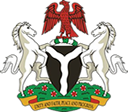Key Findings
The results from the impact assessment revealed extensive losses to lives and livelihood and the disruption of essential services and economic activities. Both agriculture and non-agricultural sectors were severely affected leading to substantial income losses and undermining food security and sources of income. The assessment also shows low recovery rates of affected households and communities following the 2022 floods, hence the need for a recovery and future flood risk mitigation plan.
Overall, 64 percent of households were affected by the floods in 2022, with impacts ranging from livelihood, housing, food sources and access to basic services, such as health facilities and schools. The impacts of the flood were significantly higher in rural areas (74 percent) compared to about 40 percent in urban areas. The overall impact of flood was varied across selected states, almost all (99 percent) interviewed households in Bayelsa were affected by the floods in one way or the other, followed by Jigawa (94 percent), Nasarawa (70 percent), Kogi (70 percent), Delta (57 percent) and Anambra (23 percent). There is also gender disparity in the impact of the floods, with 66 percent of male-headed households affected compared to 57 percent of female- headed households.
A majority of affected households experienced the flooding between September- October 2022 (50.9 percent), followed by 42.7 percent recorded in July-August. The data also shows that most households (41.1 percent) experienced floods lasting 1-11 days, while 39.9 percent of respondent households experienced floods that lasted for 32 days or more.
Data source: National Bureau of Statistics
INFOGRAPHICS



